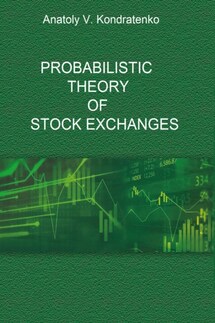Probabilistic Economic Theory - страница 25
2. The Institutional and Environmental Principle.
3. The Dynamic and Evolutionary Principle.
4. The Market-Based Trade Maximization Principle.
5. The Uncertainty and Probability Principle.
It is evident that the uncertainty and probability effects begin to play significant role in classical economies only for the markets with huge numbers of agents. We do not concern ourselves with these effects within the framework of classical economy because it is much easier to study these problems within the framework of quantum economy (see next two chapters).
2. The Economic Lagrange Equations
Let us proceed to deriving equations of motion for the classical economy shown schematically in Fig. 1. We follow the same procedure as in classical mechanics [1]. To make calculations easier, we will consider here the one-good market economy, that is, only movement in one-dimensional price space with one coordinate P. Transition to a multi-dimensional case does not cause principal complications. We will consider that by the analogy with classical mechanics [1], a state of economy comprising of N buyers and M sellers and being under the influence of the environment is fully described by establishing all prices p>iand their first time t derivatives (price changing rate or velocity of movement)
By analogy with classical mechanics we assume that these equations result from the following principle of maximization (the principle of least action or the principle of stationary action in mechanics). Namely, the action S must have the least possible value:
Fig. 1. Graphical model of an economy in the multi-dimensional PQ-space. It is displayed schematically in the conventional rectangular multi-dimensional coordinate system [P, Q] where P and Q designate all the agent price and quantity coordinate axes, respectively. Our model economy consists of the market and the external environment. The market consists of buyers (small dots) and sellers (big dots) covered by the conventional sphere. Very many people, institutions, as well as natural and other factors can represent the external environment (cross – hatched area behind the sphere) of the market which exerts perturbations on market agents, pictured here by arrows pointing from environment to market.
The obtained (1) and (2) lead to equations of motion or Lagrange equations [1]:
Equations of motion represent a system of second-order N + M differential equations of time t for N + M unknown required trajectories p>i(t).
These equations employ as yet an unknown Lagrange function or Lagrangian L (p, ṗ, t) which is to be found on the basis of research or experimental data. We will note that Lagrange functions were used in literature to solve a number of optimization problems of management science [3]. Let us emphasize that determination of the Lagrange function is the key problem that can only be solved in practice by making the data of theoretical calculation fit the experiment. It can not be done using theoretical methods only. But what we can do quickly is to make the first obvious trial step. Here we assume that to a certain degree of approximation, the Lagrange function resembles (in appearance only!) the Lagrange function of its physical prototype, a system of







